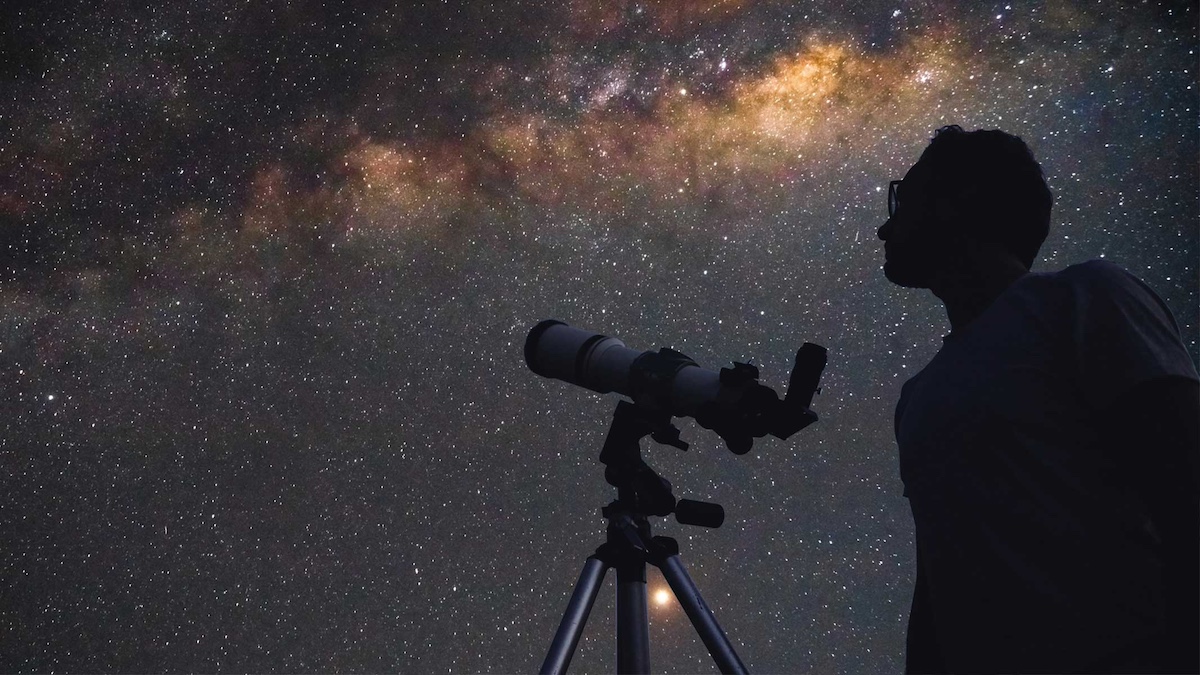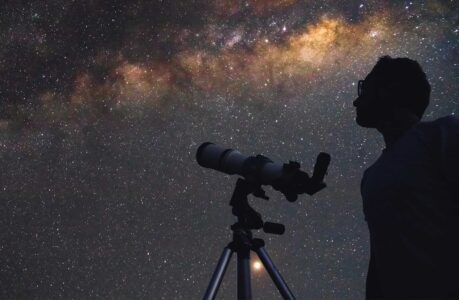Unlocking the Secrets of Stunning Night Sky Photography
Introduction
Astrophotography, the art of capturing the beauty of the night sky, has gained immense popularity in recent years. Whether you’re a seasoned astrophotographer or a budding enthusiast, you’ve probably wondered about the importance of using a special mount for this fascinating hobby. In this comprehensive guide, we’ll delve into the world of astrophotography mounts, exploring their significance, types, and how they can elevate your stargazing experiences to new heights.
What’s the Fuss About Astrophotography Mounts?
A Stellar Beginning
Astrophotography is all about capturing the wonders of the cosmos, from breathtaking nebulae to distant galaxies. Unlike traditional photography, astrophotography requires long exposure times, often lasting minutes or even hours, to collect sufficient light from faint celestial objects. This lengthy exposure time makes it crucial to keep your camera steady to avoid blurriness and maintain pinpoint precision.
The Challenge of Earth’s Rotation
One significant challenge astrophotographers face is the Earth’s rotation. As our planet spins on its axis, the stars appear to move across the night sky. This apparent motion can cause streaks or trails in your astrophotographs if your camera is not properly aligned with the stars. Here’s where astrophotography mounts come into play.
The Role of an Astrophotography Mount
Astrophotography mounts, also known as equatorial mounts or star trackers, are specialized tools designed to counteract the Earth’s rotation. They precisely track the movement of celestial objects, allowing your camera to follow them smoothly as they traverse the sky. This tracking capability ensures that your long-exposure images remain sharp and detailed.
Achieving Pinpoint Precision
Imagine attempting to capture a stunning image of the Orion Nebula or the Andromeda Galaxy without a mount. The result would likely be a blurry, unimpressive mess. Astrophotography mounts eliminate this frustration, enabling you to achieve pinpoint precision in your astrophotographs.
Types of Astrophotography Mounts
Now that we understand the importance of using a mount for astrophotography, let’s explore the various types available, each catering to different needs and budgets.
1. Equatorial Mounts
Equatorial mounts, also known as German equatorial mounts, are the gold standard for astrophotography. They have two axes: the right ascension (RA) axis, which aligns with the Earth’s rotational axis, and the declination (Dec) axis, which is perpendicular to it. This setup allows equatorial mounts to track celestial objects with incredible accuracy.
- Pros:
- Precise tracking of stars and celestial objects.
- Ideal for deep-sky astrophotography.
- Suitable for long-exposure imaging.
- Cons:
- Often more expensive than other mount types.
- Bulkier and heavier, making them less portable.
2. Alt-Azimuth Mounts
Alt-azimuth mounts, short for altitude-azimuth mounts, are the simplest and most intuitive type of mount. They move your camera in two directions: up and down (altitude) and left to right (azimuth). While these mounts are easy to use, they are less suitable for long-exposure astrophotography due to their inability to compensate for Earth’s rotation.
- Pros:
- Cons:
- Not ideal for long-exposure deep-sky photography.
- Limited tracking capabilities.
3. Dobsonian Mounts
Dobsonian mounts are often associated with large, aperture-rich telescopes. While primarily designed for visual observation, they can be adapted for astrophotography with some modifications. However, their alt-azimuth design makes them less suitable for long-exposure imaging without additional tracking devices.
- Pros:
- Cost-effective for visual astronomy.
- Excellent for stargazing and planetary observation.
- Some models can be upgraded for basic astrophotography.
- Cons:
- Limited tracking capabilities for astrophotography.
- Not designed for long-exposure imaging.
4. Star Trackers
Star trackers, or camera trackers, are a popular choice for astrophotographers who want portability and simplicity. These compact devices attach to your tripod and camera, allowing you to capture long-exposure images of the night sky without the need for a bulky mount. They work by aligning with the stars’ movement and slowly rotating to compensate for the Earth’s rotation.
- Pros:
- Highly portable and lightweight.
- Budget-friendly option for beginners.
- Suitable for wide-field astrophotography.
- Cons:
- Limited payload capacity for heavy cameras and lenses.
- Not as precise as equatorial mounts for deep-sky objects.
5. Fork Mounts
Fork mounts are commonly found in Schmidt-Cassegrain telescopes (SCTs) and similar designs. They have a fork-shaped arm that holds the telescope, allowing it to move in both altitude and azimuth. While they are versatile for visual astronomy, they may require additional accessories to adapt to astrophotography.
- Pros:
- Versatile for various types of observation.
- Some models can be used for basic astrophotography.
- Cons:
- Limited tracking capabilities without additional equipment.
- May need modifications for long-exposure astrophotography.
Which Mount is Right for You?
Choosing the right astrophotography mount depends on your goals, budget, and level of experience. Here are some considerations to help you make an informed decision:
1. Budget
If you’re just starting and want to dip your toes into astrophotography without breaking the bank, a star tracker or an alt-azimuth mount might be a suitable choice. They are more budget-friendly compared to equatorial mounts and can still produce impressive results for wide-field astrophotography.
2. Portability
Do you plan to travel to dark-sky locations or simply prefer a setup that’s easy to transport? Star trackers and alt-azimuth mounts are the most portable options. They are lightweight and don’t require heavy tripods, making them ideal for on-the-go astrophotography.
3. Photography Goals
Consider what you want to photograph. If your primary interest is capturing deep-sky objects like galaxies and nebulae, an equatorial mount is the best choice due to its precise tracking capabilities. For lunar and planetary imaging, alt-azimuth mounts or Dobsonian mounts can suffice.
4. Future Expansion
Think about your long-term goals in astrophotography. If you’re committed to advancing your skills and capturing more challenging subjects, investing in an equatorial mount from the start can save you money and frustration down the road. Equatorial mounts offer room for growth and can support heavier telescopes and camera setups.
The Importance of Polar Alignment
No matter which type of mount you choose, polar alignment is a critical step in astrophotography. This process involves aligning the mount’s axis with the celestial pole, ensuring that it accurately tracks the movement of the stars. Proper polar alignment is essential for minimizing star trailing during long exposures.
To achieve precise polar alignment, you’ll need to use tools like polar alignment scopes or smartphone apps designed for this purpose. Take the time to learn and master polar alignment techniques, as it can significantly impact the quality of your astrophotographs.
Accessories and Upgrades
Once you’ve selected your mount, you may want to consider additional accessories and upgrades to enhance your astrophotography experience. Here are some popular options:
1. Autoguiders
Autoguiders are devices that assist your mount in maintaining precise tracking. They use a separate guide camera to monitor a guide star and make small adjustments to keep your primary camera on target. Autoguiders are especially useful for long-exposure deep-sky imaging.
2. Remote Shutter Release
A remote shutter release allows you to trigger your camera without physically touching it. This minimizes vibrations and prevents blurriness in your images, which can be crucial for astrophotography where every detail matters.
3. Telescope Mount Adapters
If you’re using a telescope in your astrophotography setup, consider investing in telescope mount adapters that allow you to securely attach your camera to the telescope’s eyepiece or focuser. This ensures a stable connection and accurate framing.
4. Light Pollution Filters
Light pollution filters are essential if you’re photographing from urban or suburban areas with excessive artificial light. These filters help block out unwanted light wavelengths, improving the contrast and clarity of your astrophotographs.
5. Cooling Systems
In some cases, especially when imaging with dedicated astronomy cameras, cooling systems can be beneficial. These systems lower the camera’s sensor temperature, reducing noise in long-exposure images.
Expert Tips for Successful Astrophotography
Now that you’re equipped with knowledge about mounts and essential accessories, let’s explore some expert tips to help you succeed in astrophotography:
1. Plan Your Shoot in Advance
Before heading out to capture the night sky, plan your astrophotography session meticulously. Research celestial objects, check weather conditions, and choose a suitable location away from light pollution. Planning ahead increases your chances of getting stellar results.
2. Master Your Equipment
Take the time to familiarize yourself with your camera, telescope (if you have one), and mount. Understanding your equipment’s settings and capabilities will help you make the most of your astrophotography endeavors.
3. Learn Image Processing
Astrophotography doesn’t end when you capture your images; it continues during the post-processing stage. Invest time in learning image processing techniques to enhance your astrophotographs and bring out the hidden details in your shots.
4. Practice Patience
Astrophotography can be challenging, and success often requires patience. Be prepared for nights when the conditions aren’t ideal or when you encounter technical difficulties. Don’t be discouraged; every astrophotographer faces setbacks.
5. Join a Community
Consider joining an astrophotography community or club. Connecting with fellow enthusiasts can provide valuable insights, tips, and a sense of camaraderie. You can also benefit from group outings to dark-sky locations.
Conclusion
In the world of astrophotography, using a special mount is more than just a choice; it’s a necessity for achieving stunning, high-quality images of the night sky. Whether you opt for an equatorial mount, a star tracker, or another type, the mount you select will significantly impact your ability to capture the wonders of the cosmos.
As you embark on your astrophotography journey, remember that it’s not just about the equipment; it’s about the passion and dedication you bring to the craft. With the right mount, accessories, and a little expert guidance, you’ll be well on your way to creating breathtaking images of the universe that will leave others stargazing in awe.
Explore More in Astrophotography:

